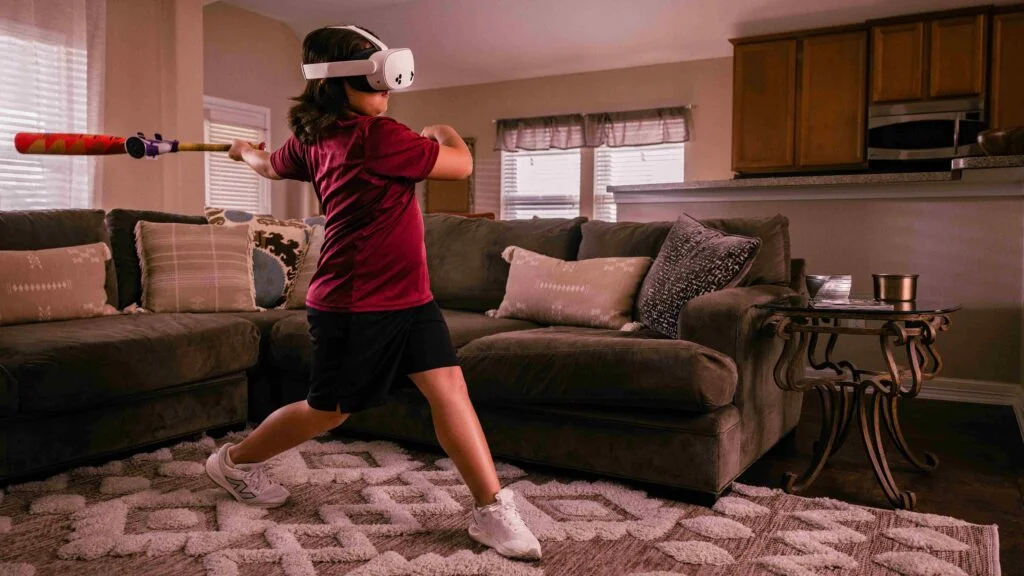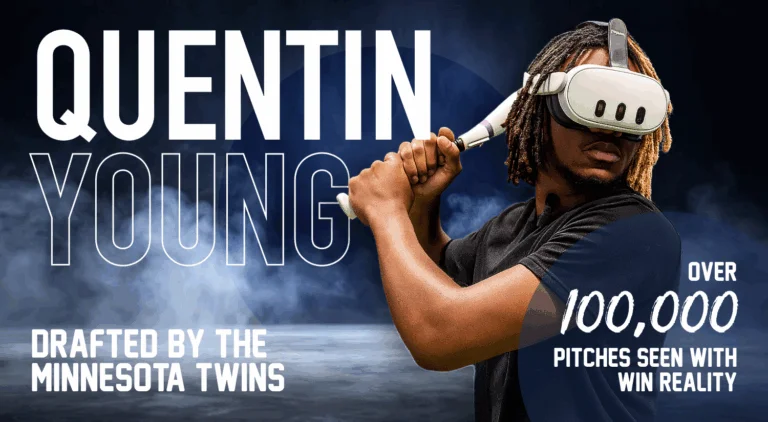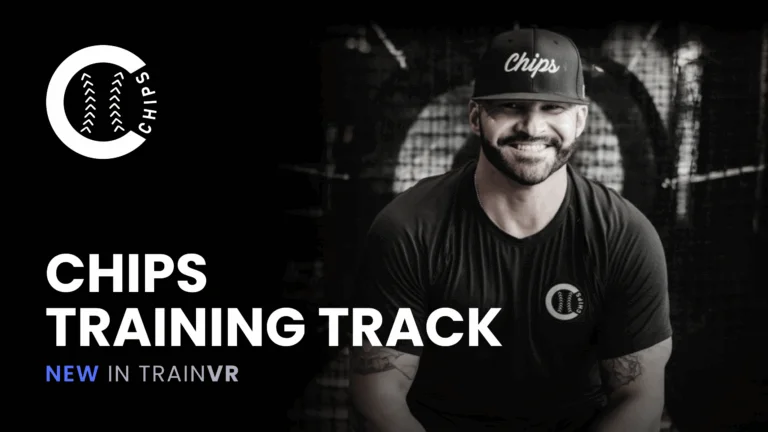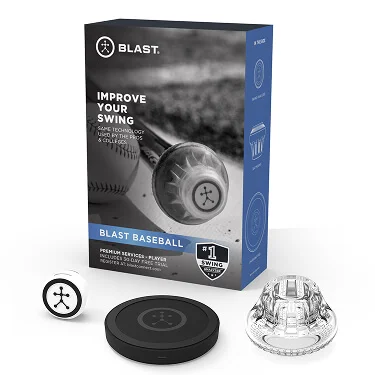Bat speed is one of the most critical metrics for baseball and softball hitters. It is an important measuring stick for a hitter’s ability to do damage at the plate. Bat speed is the speed at which the bat moves through the swing, usually measured at contact. High bat speed creates a greater potential for higher exit velocity, increasing the distance the ball will travel and the hitter’s ability to do damage at the plate.
Improving bat speed involves a combination of building strength, explosiveness, efficient swing sequencing, and mobility. To compete at each level of the game, there is a baseline bat speed that players must achieve. For most individuals, reaching that benchmark is achievable with the right training approach. While higher bat speed can enhance the potential to hit the ball harder and farther, it’s only one factor in a larger equation for success at the plate. Many successful hitters excel with average or even below-average bat speed.
The Short Answer: According to Blast Motion, here are the target ranges for each level of play. These numbers provide general targets, but every hitter grows and develops at their own pace:
The Different Stages: Analyzing Bat Speed by Age
As players age, bat swing speed evolves alongside their physical development, experience, and training.
Youth Players (8-12 Years Old)
At this stage, bat speed is typically between 40-56 mph. The focus should be on developing hand-eye coordination, timing, and bat-to-ball skills rather than raw bat speed. The natural development of their body and cleaning up inefficiencies in the swing will bring higher speeds. Intent-wise, we should be telling the hitter to swing hard and hit the ball as far as they can. Drills for younger players include:
- Tee Work: Emphasize hitting hard line drives with proper swing mechanics.
- Line Drive Competitions: Create competitions with youth players to see how many line drives in a row they can hit
- Distance Competitions: Create competitions with youth players to see who can hit the ball the farthest distance.
Middle School (13-14 Years Old)
As Middle School hitters begin to develop more strength, their bat speed increases to around 46-62 mph. When training bat speed at this age, focus on the hitter’s intent and training them to move their body and the bat fast. Effective drills for this group include:
- Shuffle Ups: This drill will help hitters who need to learn how to generate momentum, move fast, and build bat speed. This will also help hitters who tend to be stiff and struggle to create rhythm in their swing.
- Knob to Knee Drill: This drill is great for helping hitters learn to time their hands and lower body to work together in rhythm. Hitters will learn how to create a good pelvis & upper torso load, separation, and gain momentum into the swing. When doing this drill, hitters should be swinging with high intent to do damage.
- Max Effort Swings: This is great for hitters looking to swing with intent, build bat speed, and need to learn how to move their body fast. Maintain a low line drive focus, keeping the ball between a 10-20 degree launch angle.
- Torque Drill: This drill helps hitters create hip-shoulder separation and those who have trouble sequencing their swing from the hips first, who tend to push with their hands. This is great for hitters who want to create more bat speed, good direction, and hit for more power.
- Hitters Count Drill: Simulate live at-bats starting from a 2-0 or 3-0 count to learn how to do damage in these counts and to build confidence.
High School, College, and Professional Players (15+ Years Old)
From High School and up, bat speed is very important to possess. This is where being at the target range for each level is crucial. High School varsity hitters typically achieve bat speeds between 57-71 mph with JV hitters getting their foot in the door at 53 mph. College hitters will average 61-73 mph for their bat speed and Professionals will be in the 63-80 mph range. When training bat speed at this level we should first focus on the hitter getting in the weight room. Their physicality needs to match players of that level first. If they are hitting weight room targets, then the next step is to go through bat speed training. At these levels, attention to detail in mechanics and strength training is paramount. Any previously mentioned drills will help hitters at these levels, however, you can start incorporating the following drills at this point.
- PVC Madman Swings: This will help hitters looking to swing with intent, build bat speed, and learn how to move their body fast as well as decelerate each component of the kinetic sequence in the swing.
- Recoil Swings: This is great for hitters who struggle to stay on the ball and drag the bat through the zone or lose their direction. This will force the body to turn tight, swing from the center of the body, and accelerate then decelerate the swing quickly.
- Med Ball Scoop Toss & Med Ball Shot Put: These drills are great for hitters looking to learn how to move their body fast, maintain good posture, and create power from the center of their body. Hitters will learn how to properly load and unload their body in the proper sequence.
- Hitting Plyo Balls: Hitting with plyo balls will help hitters who are looking to improve their contact quality, improve their ability to brace at impact, and get through the ball. Look to hit the ball with 12 to 2 o’clock shape for RH/12 to 10 o’clock for LH
- Weighted Bat Program: Going through a weighted bat program using over and underweight bats is a great way to develop bat speed at these levels. Here is a sample program:
| Heavy Bat | 2 Swings |
| Light Bat | 2 Swings |
| Game Bat | 2 Swings |
| Perform 4 sets of this sequence with a break at the end of the rotation | |
The Importance of Using the Right Tools
Improving bat speed requires the right combination of tools, training programs, and analytics. Here’s how:
Strength Training
Incorporating medicine balls, resistance bands, and plyometric exercises builds upper-body and core strength as well as explosiveness, essential for generating higher bat speeds. Deadlifts and split squats are great for building strength, while medicine ball rotational throws and jumps are particularly effective for building power.
Weighted Bat Training
Using heavier bats helps build strength and efficiency in the hitter’s swing, while lighter bats improve swing speed. Alternating between the two as well as a hitter’s game bat will accelerate bat speed gains. Again, the heavy bat builds strength and efficiency, while the light bat teaches the body to move fast.
Swing Analysis Tools
A combination of technology such as Blast Motion, Rapsodo, or Hit Trax offers precise measurements of bat speed, exit velocity, and bat path. Regular analysis helps track progress, making sure the hitter’s training is effective while also identifying areas for improvement.
Bat Speed Training with WIN Reality
While traditional baseball drills are essential for building strong fundamentals, WIN Reality’s VR Baseball Training Platform revolutionizes how hitters improve bat speed. By simulating game-speed pitches, learn how to incorporate their new bat speed unlocks into game environments. This immersive experience offers hitters the unique advantage of training not only their bat speed but also their timing and swing decisions against live pitching year-round. Coupled with the mobile app, players and coaches can track progress, review stats, and set measurable goals, such as boosting bat speed, exit velocity, and overall consistency.
The revolutionary SwingAI Trainer, integrated into WIN Reality’s mobile app, provides in-depth swing analysis through a simple “in-range” or “out-of-range” feedback system. This tool identifies inefficiencies in a hitter’s mechanics and offers personalized drills to target specific areas for improvement. Acting like a personal swing coach, SwingAI helps hitters make data-informed adjustments to unlock more bat speed while tracking their progress over time. It even alerts players when key swing components fall out of range, proactively addressing potential slumps before they develop.
With this suite of innovative tools, WIN Reality empowers hitters of all ages and skill levels to take their performance to the next level. Explore our pricing options to find the best fit for your training needs and watch as your players gain confidence, improve their skills, and thrive at the plate. Transform your hitting development today with WIN Reality.
GET STARTED WITH WIN REALITY



